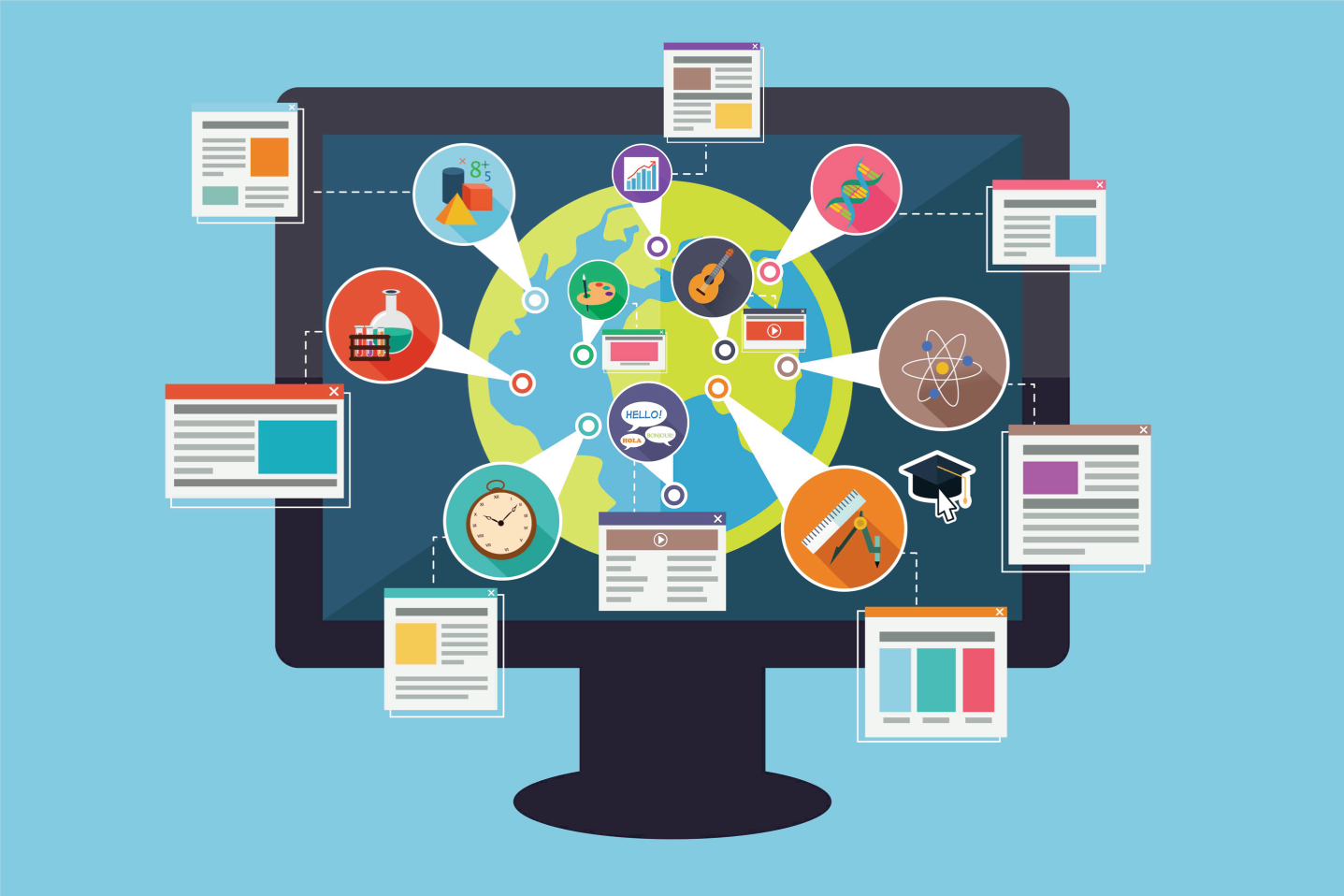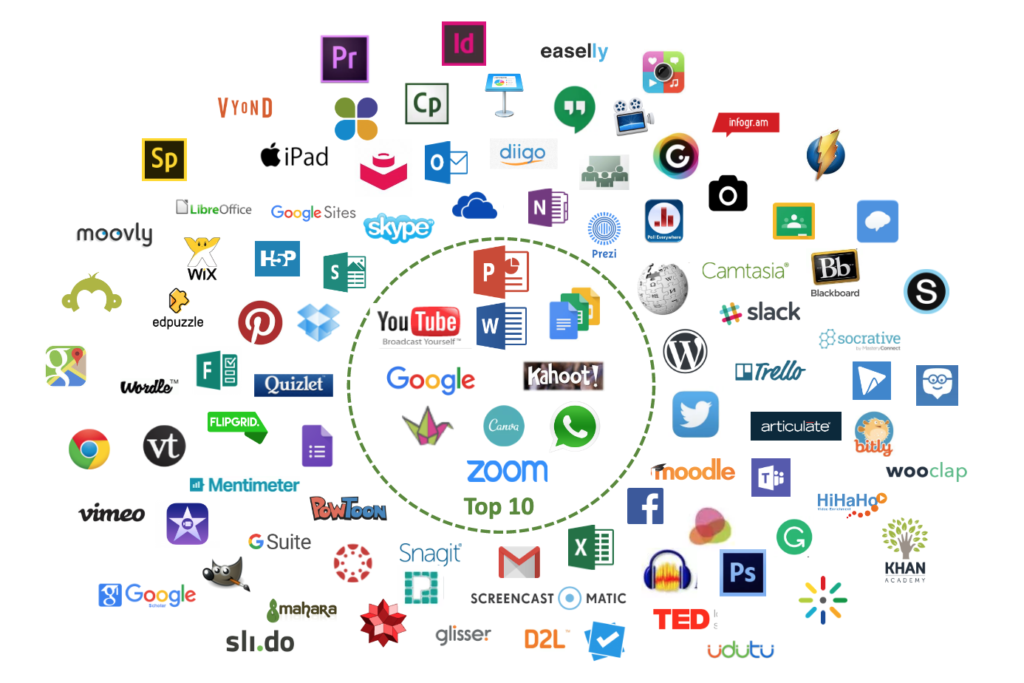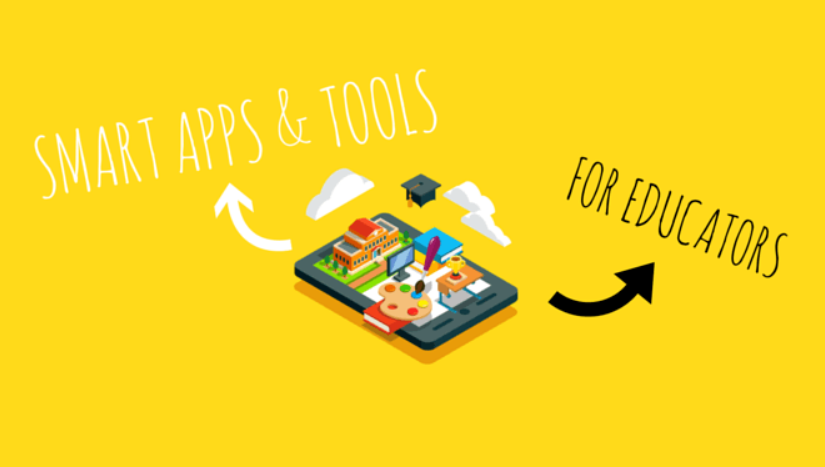Key Takeaways
- Explore a variety of free digital tools, virtual classrooms, online classrooms, and online apps to enhance teaching skills and engage students effectively.
- Use interactive building tools in the virtual classroom to make lessons more dynamic and captivating for students.
- Streamline classroom management using digital tools and online apps for attendance, grading, and communication.
- Optimize lesson planning and organization with the help of digital platforms and apps designed for educators, teachers, and schools.
- Foster communication and collaboration among students, colleagues, and teachers by leveraging online tools, platforms, and digital content.
- Utilize formative assessment tools to track student progress and provide targeted support for their growth.
In today’s fast-paced digital world, educators constantly seek innovative ways to enhance their teaching methods and engage students. The demand for free digital tools for teachers has surged, offering many resources to enrich the learning experience. These tools streamline administrative tasks and facilitate interactive and personalized learning environments.
Educators’ increasing reliance on these free digital tools reflects a shift towards modernizing traditional teaching practices and adapting to the evolving needs of 21st-century learners. As technology continues to play an integral role in education, the use and accessibility of these resources empower educators to create dynamic lesson plans while catering to diverse learning styles.
Exploring Various Online Apps and Tools for Teaching

Range of Free Digital Tools
Teachers can use free teaching tools to enhance lesson planning and student engagement. These online tools are great for teachers. They cover different subjects and teaching styles. Teachers can find apps and tools that work best for them. They can use these tools to make cool presentations, plan activities, and do projects with their students. And the best part is, they’re all free!
One example is Google Apps for Education, which includes Google Drive, offering an array of applications such as Docs, Sheets, Slides, and tools. These tools enable teachers to seamlessly create and share documents, spreadsheets, and presentations with students. There are numerous websites dedicated to providing free educational materials like worksheets, lesson plans, and interactive word games tailored to different age groups.
Innovative Resources
By leveraging these great tools, teachers can cultivate essential skills in their students while making learning more engaging. For instance, educators can incorporate online platforms that encourage creativity through multimedia projects or virtual field trips using tools. Also, teachers can use online tools to grade assignments faster and see how students are doing.
Enhancing Lessons with Interactive Building Tools
Engaging Lesson Content
Interactive lessons can make learning more fun! Teachers can use free digital tools with videos, pictures, and sound to make their lessons exciting. This helps students pay attention and get more involved in their learning.
These user-friendly building tools enable educators to design interactive learning activities that cater to different learning styles. For example, teachers can create virtual flashcards or quizzes using these tools to reinforce key concepts in a fun and interactive manner. They can develop educational games that make learning feel like play while reinforcing essential skills and knowledge using tools.
Enhanced Student Participation
Using interactive building tools in teaching helps students get more involved. Teachers can make fun learning games for students to play, making learning more enjoyable. It also helps students think and participate more actively.
Moreover, some digital tools offer unique features such as “bouncy balls” which respond to noise levels in the classroom. Teachers can use this tool creatively by setting specific noise level targets for different activities during class sessions. As a result, students become more conscious of their behavior while actively participating in classroom discussions or group work.
Streamlining Classroom Management Digitally

Attendance Tracking and Behavior Management
Teachers can use free digital tools to streamline attendance tracking in the virtual classroom. With just a few clicks, they can record which students are present or absent using a tool, saving time and reducing paperwork. These tools often offer features for behavior management, allowing teachers to track and address student conduct in an organized manner.
For example, platforms like Google Classroom provide a straightforward tool for teachers to take attendance digitally. They can also utilize behavior-tracking features and tools within these platforms to monitor student participation and engagement during online lessons.
Organizing Assignments, Grades, and Communication
Free digital tools for online classrooms enable educators to organize assignments and grades efficiently. These platforms let teachers make online assignments for students to do at home. Students can upload their work using a tool. It also makes it easy for teachers to grade the work with a simple interface.
Furthermore, these tools facilitate seamless communication between teachers and students. Teachers can send announcements about upcoming assignments or important class updates through these platforms without relying on traditional methods such as email or physical handouts.
Optimizing Lesson Planning and Organization
Accessing Free Digital Resources
Teachers can access various free digital tools to streamline the lesson planning process. These websites have the stuff to help make lesson plans. You can change them to fit what you need for your class. It saves teachers time because they don’t have to make everything from the start.
One such tool is Planboard, an online platform where teachers can create and organize their course materials, including lessons, assignments, and assessments. With features like drag-and-drop functionality for rearranging lessons and the ability to attach files directly to plans, Planboard simplifies the planning process.
Another example is Edmodo, a digital hub that allows teachers to manage courses effectively by sharing resources with students and assigning homework digitally. This saves time and fosters a more organized approach to managing tasks associated with different courses.
Utilizing Customizable Lesson Plans
Digital tools allow educators to tailor lesson plans according to individual teaching styles and student needs. For instance, software like Common Curriculum offers customizable templates for creating engaging lesson content while incorporating multimedia elements such as videos or interactive exercises.
Fostering Communication and Collaboration Online

Seamless Communication
Teachers can utilize video conferencing tools to facilitate seamless communication between students, parents, and colleagues. These platforms enable real-time interaction through video calls, allowing teachers to effectively engage with students and address their queries.
Digital communication tools such as messaging apps or email services provide a convenient way for teachers to share important information with parents and colleagues. These tools allow educators to easily send updates about assignments, upcoming events, or general class announcements.
Interactive Collaboration
Free digital tools offer the opportunity to foster collaboration among students by creating interactive online discussion forums. Teachers can encourage students to share ideas, ask questions, and respond to each other’s posts in a virtual space. This not only enhances sharing of knowledge but also promotes peer learning and engagement.
Furthermore, free blogging platforms allow educators to create a collaborative environment where students can publish their work online. Students can write blog posts on various topics related to their coursework or interests while receiving feedback from peers and teachers.
Leveraging Formative Assessment Tools for Student Growth
Real-Time Understanding
Utilize formative assessment tools to gauge student understanding in real-time. These digital tools allow you to gather immediate feedback on how well your students grasp the material. For example, platforms like Kahoot! and Quizizz enable you to create interactive quizzes that students can answer using their devices.
By analyzing the student responses in real-time, you can quickly identify areas where your students may be struggling or excelling. This allows you to adjust your teaching approach on the spot, ensuring that every student has a chance to understand and progress at their own pace.
Tailored Instruction
Employing interactive quizzes and surveys through these digital assessment tools provides valuable insight into each student’s comprehension level. With this info, teachers can customize their lessons to help each student. For example, if many students have trouble with a topic on a quiz, teachers can spend more time on it in class or give extra help.
Leveraging formative assessment tools enables teachers to provide targeted support for struggling learners while challenging those excelling. This personalized approach helps ensure that all students have an opportunity to succeed by receiving instruction tailored to their specific needs.
Creative Content Design and Creation of Apps for Educators

Visual Presentations
Educators can utilize free digital tools to create engaging visual presentations. Platforms like Canva and Google Slides offer a range of templates, graphics, and fonts to design visually appealing slideshows. These tools enable teachers to incorporate images, videos, and audio into their presentations to make learning more interactive.
Platforms such as Canva provide graphic design tools that allow educators to craft professional-looking infographics. By dragging and dropping, teachers can easily add statistics, charts, and icons to their infographics. This makes info easier for students to understand and looks cool, too!
Educational Videos
Teachers can harness the power of free video creation apps like Biteable or Animoto to develop educational videos without cost. These platforms offer user-friendly interfaces with pre-designed templates and stock footage that make it effortless for educators to produce high-quality video content.
Educational materials designed using these digital content creation apps enhance student engagement and effectively cater to different learning styles. By incorporating visuals and animations into their lessons through these free digital tools, educators can ensure a more comprehensive understanding of the material among students.
Building Teacher Communities Through Platforms and Shared Workspaces
Online Communities
Connect with fellow educators through online communities to share resources, ideas, and best practices. These platforms provide a supportive environment for teachers to collaborate and learn from each other. For example, the “TeachersConnect” platform allows educators to engage in discussions, seek advice, and share teaching strategies.
Engaging with a community of like-minded professionals can offer valuable insights into effective teaching methods. Educators can exchange tips on managing virtual classrooms or discuss innovative lesson plans that cater to diverse learning styles.
Collaborative Platforms
Utilize free digital workspaces and collaborative platforms to co-create projects with colleagues. Tools such as Google Workspace for Education enable teachers to develop lesson plans and educational materials collectively. Educators can enhance their creativity by working together virtually while providing students with comprehensive learning resources.
These shared workspaces also foster a sense of camaraderie among teachers who may be working remotely or from different locations. They facilitate seamless communication and coordination between educators contributing to the same project.
Evaluating the Impact and Future of Digital Teaching Tools

Enhancing Student Learning Outcomes
Free digital tools for teachers have significantly enhanced student learning outcomes. For instance, interactive educational games like Kahoot! make learning fun and engaging while helping students retain information better. Similarly, platforms such as Google Classroom streamline assignments, feedback, and communication between teachers and students.
Digital tools enable personalized learning experiences. Adaptive learning programs like Khan Academy adjust to individual student needs, providing targeted support in areas where students struggle while allowing advanced learners to progress at their own pace.
Moreover, these tools facilitate collaborative learning. Platforms like Padlet allow students to share ideas and collaborate on projects seamlessly, regardless of physical location.
Potential Future Developments
The future of tech in education holds great promise. Artificial intelligence (AI) advancements can lead to more sophisticated adaptive learning systems that tailor content based on a student’s unique strengths and weaknesses.
Furthermore, virtual reality (VR) has the potential to revolutionize education by offering immersive experiences that transport students beyond the confines of traditional classrooms. Imagine history lessons where students explore ancient civilizations firsthand or science classes conducted inside human cells!
Developments in augmented reality (AR) can bring abstract concepts to life through interactive visualizations integrated into everyday classroom activities.
Summary
You’ve just explored various free digital tools that can revolutionize how you teach and engage with your students. From interactive building tools to streamlining classroom management and fostering communication, these resources offer endless possibilities for enhancing your lessons and student engagement. You can use cool tools to improve your teaching for each student. You can also make a fun learning space. And think about how these tools can change teaching in the future.
Take the next step and incorporate these digital teaching tools into your lesson plans. Embrace the opportunity to experiment with new apps and platforms, allowing yourself to grow alongside your students in this ever-evolving digital landscape.
Frequently Asked Questions

What are some examples of free digital tools for teachers?
Various free digital tools are available for teachers, such as Google Classroom for streamlining classroom management, Kahoot for formative assessment, and Canva for creative content design.
How can digital teaching tools enhance lessons?
Digital teaching tools can enhance lessons by providing interactive building tools that make learning more engaging and effective. For example, using platforms like Nearpod or Pear Deck allows educators to create interactive presentations and assessments.
How do digital tools help in optimizing lesson planning and organization?
Digital tools help optimize lesson planning by providing platforms such as Planboard or Trello, allowing teachers to efficiently organize their curriculum, resources, and schedules in a centralized online space.
What role do digital tools play in fostering communication and collaboration among students?
Digital tools facilitate student communication and collaboration through platforms like Microsoft Teams or Slack, where students can engage in discussions, share resources, and work together on projects regardless of physical location.
Can you recommend any formative assessment tools for student growth?
Formative assessment is crucial for student growth. Tools like Quizizz or Socrative offer interactive quizzes that provide real-time teacher and student feedback, enabling personalized learning experiences.

